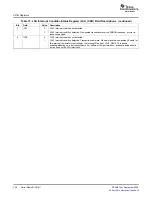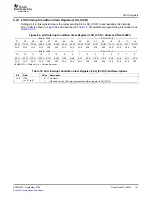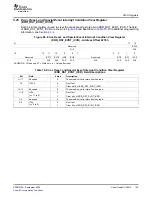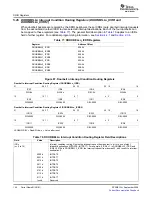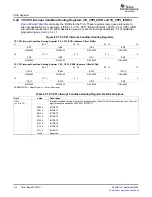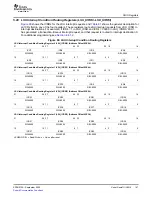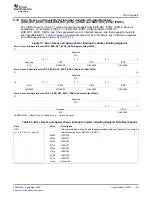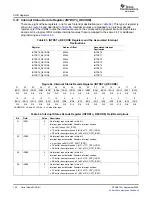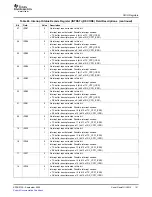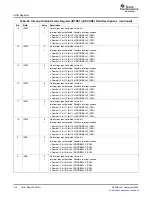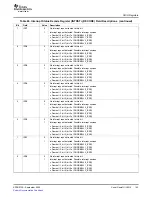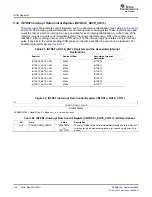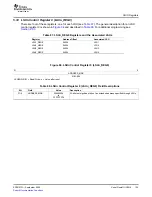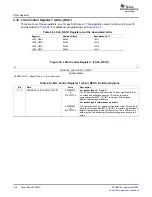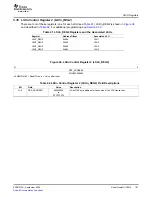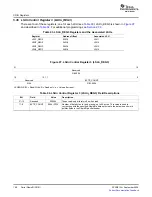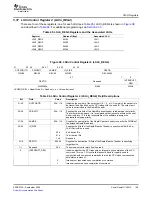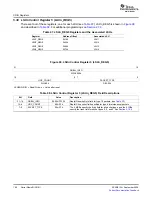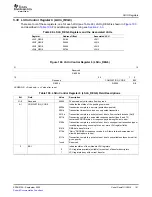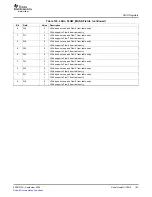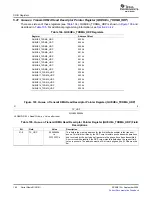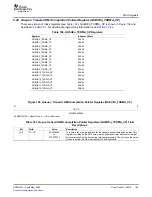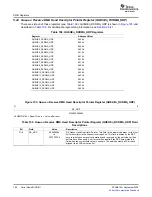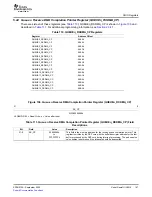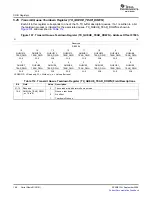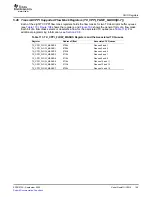
www.ti.com
5.32 INTDSTn Interrupt Rate Control Register (INTDSTn_RATE_CNTL)
SRIO Registers
There are eight interrupt rate control registers, one for each interrupt destination (see
Table 85
).
Figure 93
and
Table 86
provide a general description for an interrupt rate control register. These registers are used
to set the rate at which an interrupt can be generated for each interrupt destination. A write to one of the
registers reloads a counter and immediately starts the counter decrementing. When the counter value
reaches 0 (after counting down or after a CPU write of 0), the interrupt logic generates a single interrupt
pulse if any bits in the corresponding ICSR are set (or become set after the zero count is reached). For
additional programming see
Section 4.7
.
Table 85. INTDSTn_RATE_CNTL Registers and the Associated Interrupt
Destinations
Register
Address Offset
Associated Interrupt
Destination
INTDST0_RATE_CNTL
0320h
INTDST0
INTDST1_RATE_CNTL
0324h
INTDST1
INTDST2_RATE_CNTL
0328h
INTDST2
INTDST3_RATE_CNTL
032Ch
INTDST3
INTDST4_RATE_CNTL
0330h
INTDST4
INTDST5_RATE_CNTL
0334h
INTDST5
INTDST6_RATE_CNTL
0338h
INTDST6
INTDST7_RATE_CNTL
033Ch
INTDST7
Figure 93. INTDSTn Interrupt Rate Control Register (INTDSTn_RATE_CNTL)
31
0
COUNT_DOWN_VALUE
R/W-00000000h
LEGEND: R/W = Read/Write; R = Read only; -n = Value after reset
Table 86. INTDSTn Interrupt Rate Control Register (INTDSTn_RATE_CNTL) Field Descriptions
Bit
Field
Value
Description
31–0
COUNT_DOWN_VALUE
00000000h
The value written to this field is immediately transferred to the interrupt
to
rate counter, which starts counting down (or causes an interrupt if 0 is
FFFFFFFFh
written).
Serial RapidIO (SRIO)
154
SPRUE13A – September 2006
Submit Documentation Feedback

